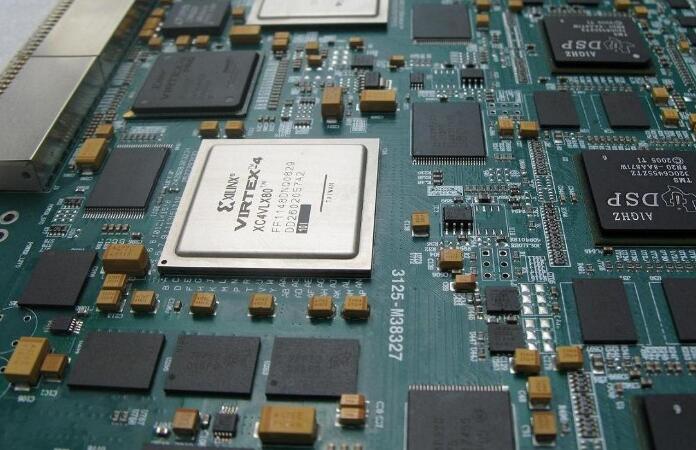What happens if we add through-hole connections from the top of the PCB to the bottom?
Let's analyze the situation of adding a through-hole connection. The PCB hole size through hole is approximately 12 mils (0.012 inches). When making a through hole, drill a 0.014 inch diameter hole and then plate it with copper, which can increase the copper wall about 1 mil (0.001 inch) thick inside the hole. The circuit board also uses Enig plating process. This adds about 200 microinches of nickel and about 5 microinches of gold to the outer surface of the copper.
We ignored these materials in our calculations and only used copper to determine the thermal resistance of the via.
Type 2 is a formula for calculating the thermal resistance of a cylindrical tube.
Calculation of Thermal Resistance of Cylindrical Tube
Formula 2: Calculate the thermal resistance of a cylindrical tube
The variable L is the length of the cylindrical tube, K is the thermal conductivity, R1 is the large radius, and R0 is the small radius.

For a 12 mil (diameter) hole using this formula, we have r0 = 6 (0.006 inches), r1 = 7 (0.007 inches), and k = 9 (copper plating).
The 12 surface dimensions of the ear hole, and the surface dimension variable L of the 5:12 ear hole is the length of the through hole (from the top copper layer to the bottom of the copper layer). The soldering power module on the circuit board does not have a resistive layer, but for other areas, PCB design engineers may need to place a resistive layer on top of each through hole, otherwise the area above the through hole will be empty. Since the via is only connected to the outer copper layer, its length is 63.4 mils (0.0634 inches).
The thermal resistance of the total via length itself is 167°c/w, as shown in Equation 3.
Calculate the thermal resistance of the through hole (12 Mil)
Formula 3: Calculate the thermal resistance of the via (12 mil)
The thermal resistance of each through hole connected to each layer of the circuit board.
The thermal resistance of the through-hole section connecting the circuit board layers
The thermal resistance of the through-hole section connected to the circuit board layer, and a higher power density can be achieved on a smaller PCB board area.
Note that higher power density can be achieved on a smaller PCB board area. These values are only the thermal resistance of the through hole itself, and it is not considered that each part of the circuit board is horizontally connected to the surrounding material. If we analyze the thermal resistance of each circuit board and compare them with the thermal resistance of through holes, it seems that the thermal resistance of through holes is much higher than the thermal resistance of each layer, but please note that one through hole occupies 1 square inch of circuit 1/5000 of the board area. If we decide to have a smaller circuit board area, such as 0.25 inches x 0.25 inches (which is 1/16 of the front circuit board area), each thermal resistance in Figure 4 will increase by 16 times. For example, the thermal resistance of T4 and 33.4 dense ear-thick FR4 layers increased from 5.21875°c/w to 83.5°c/w. Adding only a through hole to the 0.25 inch x 0.25 inch area can reduce the thermal resistance through the 33.4 ear FR4 layer by nearly half (83.5°c/w and 90.91°c/w). The area of the 0.25 inch x 0.25 inch block is approximately 400 times the area of the through hole. So if you renovate 16 holes in the area, what will happen? Compared with through holes, the effective thermal resistance of all parallel through holes will be reduced by 16 times. Figure 7 compares the thermal resistance of each 0.25 inch x 0.25 inch circuit board layer with 16 through holes. The thermal resistance of the 33.4 lug-thick FR4 layer of the 0.25 inch x 0.25 inch circuit board is 83.5°C/w.
The equivalent thermal resistance of 16 parallel vias is 5.6821°c/w.
These 16 through holes occupy less than 1/25 of the area of the 0.25 inch x 0.25 inch circuit board, but can significantly reduce the thermal resistance connection from the top to the lower level.
Comparison of thermal resistance
For the comparison of thermal resistance, please note that when heat flows down through the hole and reaches another layer, especially another copper layer, it will diffuse horizontally to the material layer. Adding more and more vias will eventually reduce the effect, because the heat that diffuses horizontally from one via to nearby materials will eventually reach the heat from the other direction (from another via). The size of the isl8240meval4z evaluation board is 3 inches x 4 inches. The top and bottom floors of the circuit board have 2 ounces of copper, and the two inner layers each have 2 ounces of copper.
Achieve higher power density on a smaller PCB board area. In order to make these copper layers work, the circuit board has 917 through holes with a diameter of 12 ears. All the through holes help to spread the heat from the power module to the copper layer.